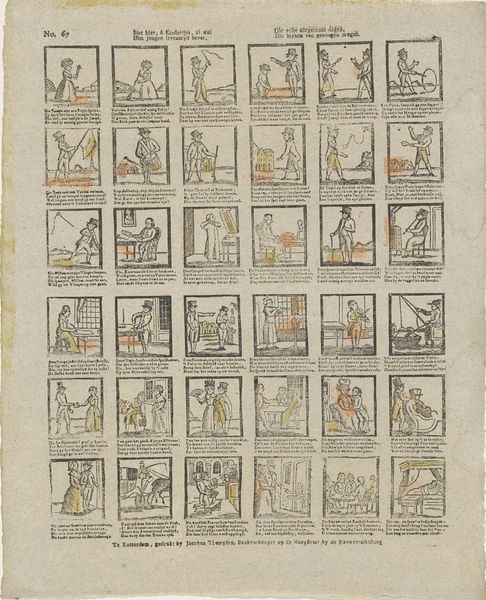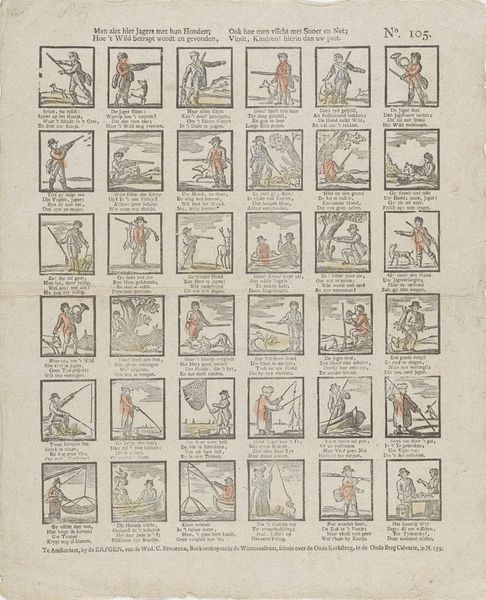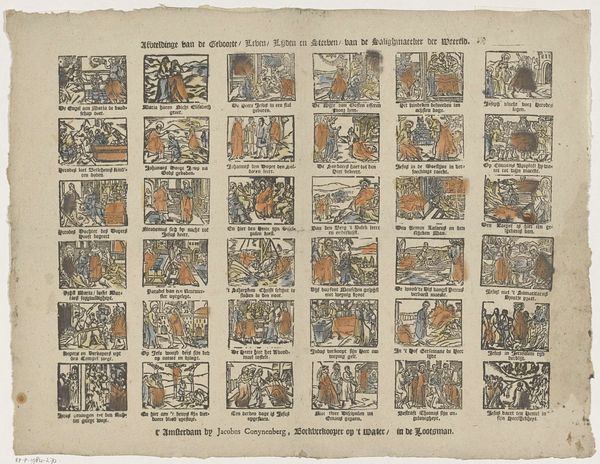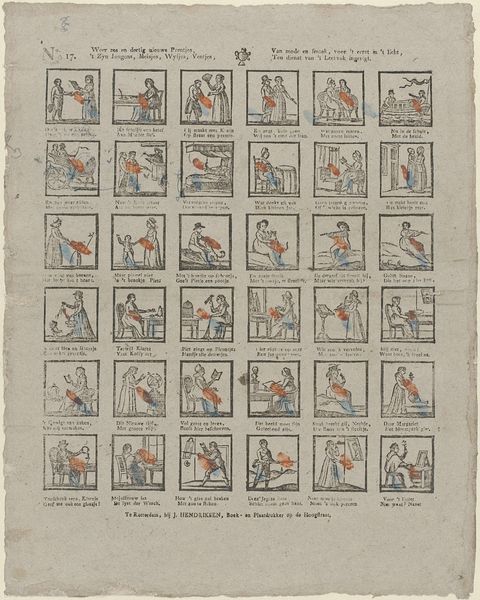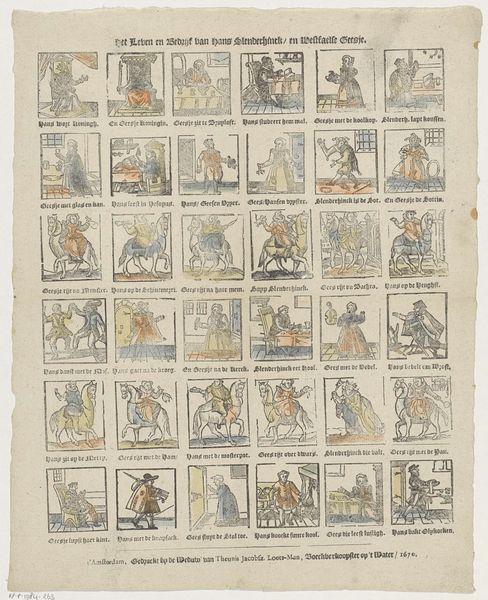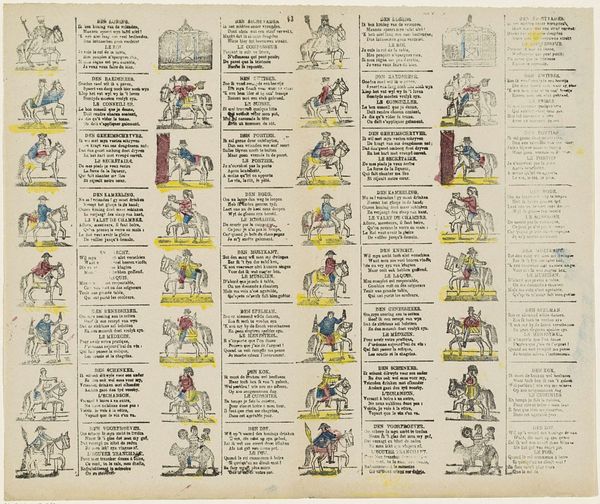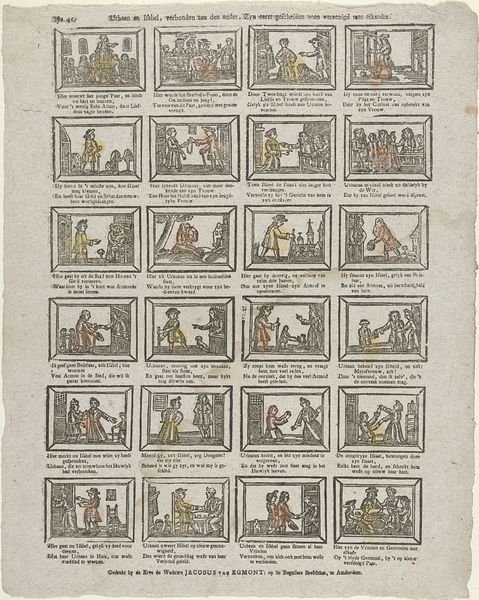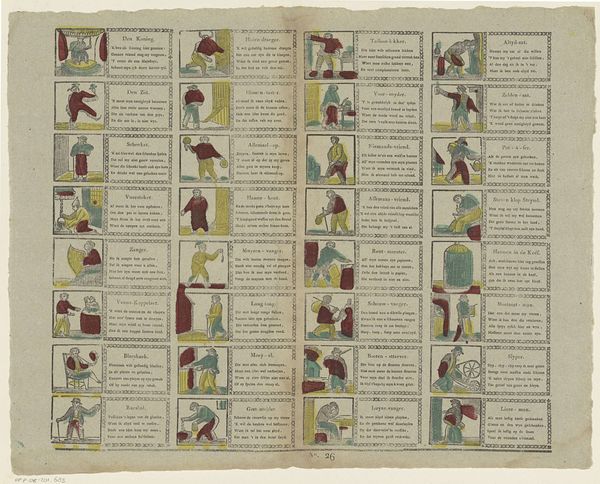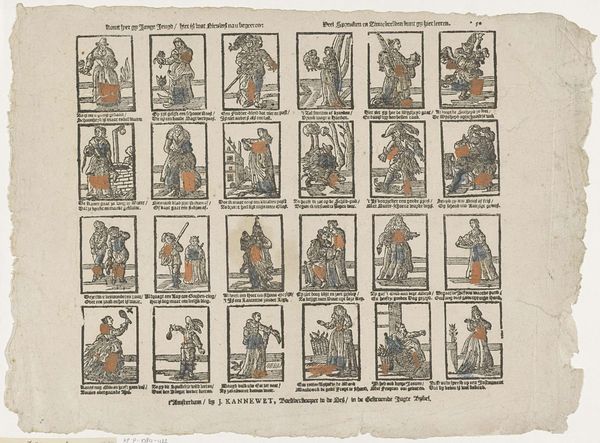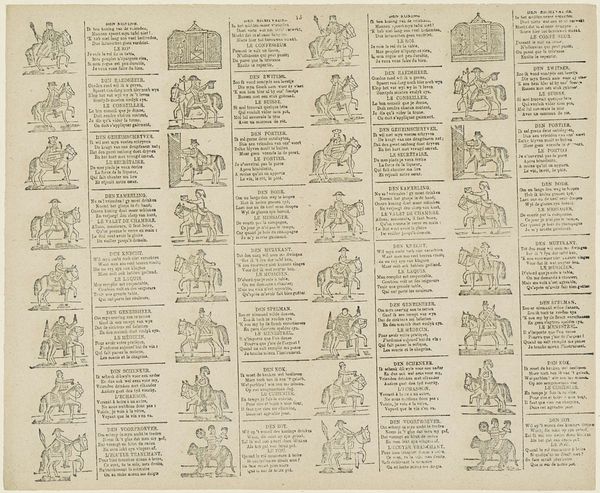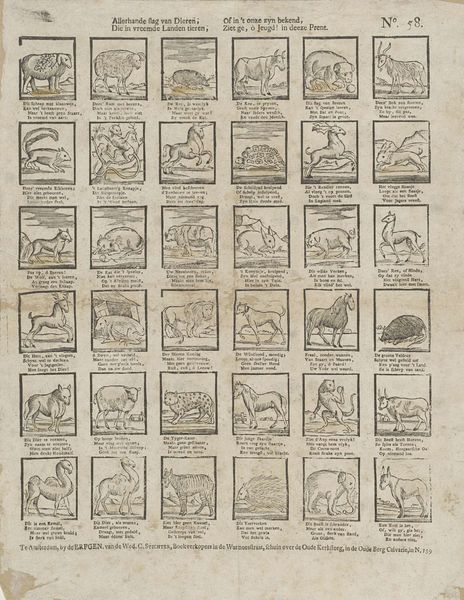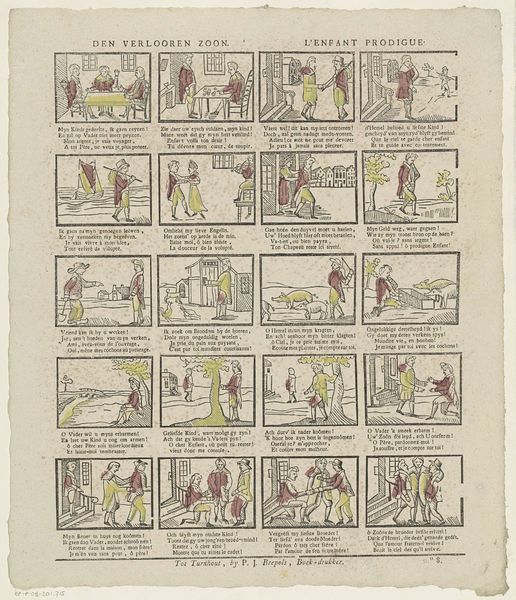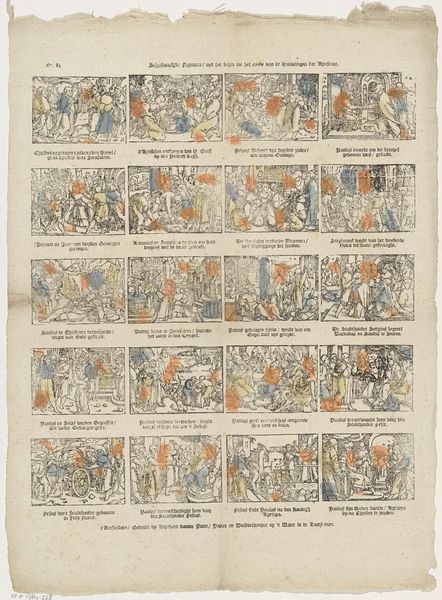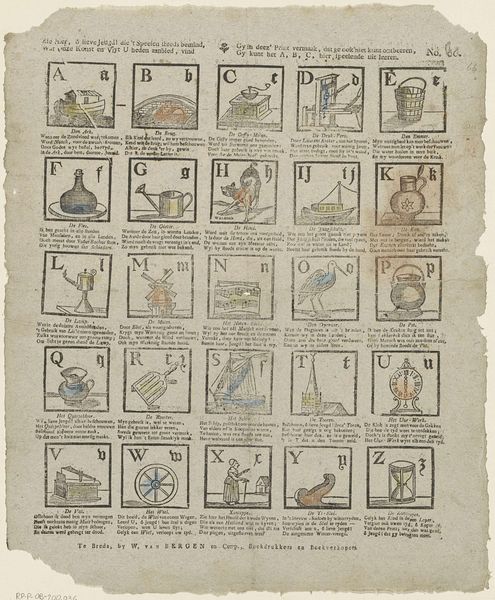
graphic-art, print, paper, engraving
#
graphic-art
# print
#
paper
#
genre-painting
#
engraving
Dimensions: height 333 mm, width 395 mm
Copyright: Rijks Museum: Open Domain
Curator: Here at the Rijksmuseum, we have a rather intriguing print from between 1800 and 1833 entitled "Driekoningenbriefjes," created by Philippus Jacobus Brepols. It's a fascinating example of early 19th-century graphic art. What catches your eye initially? Editor: Well, looking at this overall composition, I am immediately struck by how it feels like a satirical game board populated by Dutch proverbs and occupational hazards, maybe a touch fatalistic? Each little scene seems to tell a different story in miniature. Curator: Indeed! The work consists of numerous small, framed scenes, each depicting a different character or profession. We see occupations like 'the herring seller', 'the baker', but also archetypes like 'the singer' and 'the jester.' Editor: So, a collection of archetypes represented with engravings. What intrigues me is the potential for a socio-political reading. These were tumultuous times and these "little pictures" or professions, as a complete chart, probably mirrored the contemporary Dutch class struggles and working-class experience...perhaps a coded commentary on early capitalism. Curator: That's an interesting read of this piece. Each little square contains not only an image but a short verse too. So there is this added layer of narration through this early use of word and image association that one can interpret in different ways depending on their vantage. Editor: And that word and image pairing, crucial to unpack! It’s where ideology hides. Look at “The King" at the top left; notice how he literally looks caged up? Early commentary on royal excess. Each figure seems caught in a performative role—forced to uphold their status... like the "musterd man." Even though these roles look mundane, they actually unveil historical inequalities that affect access to resources. Who controls labor? How does it happen and what does it produce? Curator: So looking at the print through that lens...we are left to consider who holds power, and how did labor distribution and class roles at that moment define society. This also suggests to us, given the gameboard layout, this print also was intended for game playing as a fun but also quite meaningful family pastime. Editor: Exactly! These seemingly innocuous images hold up a mirror to social norms and ask some uncomfortable questions about who we are as a society. Curator: Definitely some thought to ponder! A snapshot from a long while ago… mirroring society still!
Comments
No comments
Be the first to comment and join the conversation on the ultimate creative platform.
